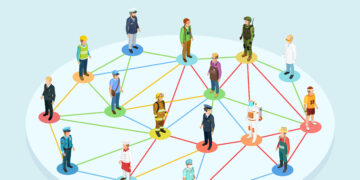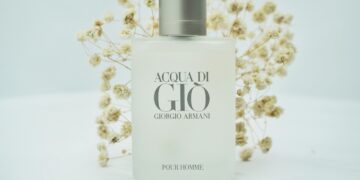The Pooh Pathology Test has taken the internet by storm, sparking curiosity and conversation around the beloved characters of Winnie the Pooh. This test, often found on personality quiz websites, invites you to discover which Hundred Acre Wood character you might be—based on how their traits align with established psychological profiles. But beneath the surface, there’s a lot of confusion, myth, and speculation regarding the Pooh Pathology Test. Is it a real diagnostic tool? Did A.A. Milne intend for his characters to represent mental health conditions? And what can we actually learn from this viral phenomenon? Let’s explore the five biggest myths and truths about the Pooh Pathology Test, with insights from respected mental health professionals like Dr. Aaron T. Beck and Dr. Kay Redfield Jamison.
References
- Shea, S. E., Gordon, K., Hawkins, A., Kawchuk, J., & Smith, D. (2000). Pathology in the Hundred Acre Wood: a neurodevelopmental perspective on A.A. Milne. Canadian Medical Association Journal, 163(12), 1557-1559.
- Aaron T. Beck – Wikipedia
- Kay Redfield Jamison – Wikipedia
- American Psychiatric Association. Diagnostic and Statistical Manual of Mental Disorders (DSM-5), 5th Edition.
- BBC News. (2018). Why Winnie-the-Pooh’s friends are more than just cartoon characters.
What Is the Pooh Pathology Test?
At its core, the Pooh Pathology Test is an online quiz inspired by a 2000 study by Dr. Sarah E. Shea and her colleagues, who playfully analyzed the personalities of Winnie the Pooh characters through a psychological lens. The study was published in the Canadian Medical Association Journal, where the authors humorously assigned potential psychiatric diagnoses to each character. For example, Winnie the Pooh was connected to ADHD and impulsivity, Piglet to generalized anxiety disorder, and Eeyore to dysthymia or chronic depression.
Since then, the idea has taken off in popular culture. The Pooh Pathology Test you find online isn’t a clinical instrument but rather a fun and reflective activity. The format varies, but typically, you answer questions about your habits, anxieties, and perspectives, and the test matches you with a character. This process can be both entertaining and thought-provoking, but it’s crucial to understand its intention and limitations.
Why Do People Take the Pooh Pathology Test?
People are drawn to the Pooh Pathology Test for many reasons. Nostalgia is a significant factor—Winnie the Pooh is a childhood touchstone for millions, and the idea of seeing ourselves in these gentle, memorable characters is appealing. But there’s more to it than just fond memories; the test taps into our innate curiosity about ourselves. As Dr. Aaron T. Beck explains, self-assessment quizzes provide people with a sense of control and understanding, especially in a world where mental health is increasingly discussed.
There’s also the role of entertainment and social sharing. The Pooh Pathology Test is often taken in groups or shared on social media, sparking conversations about mental health that might not happen otherwise. For some, it’s a lighthearted icebreaker. For others, it’s a way to reflect on their own mental wellness using familiar, non-threatening characters as a guide.
Myth 1: The Pooh Pathology Test Is a Professional Diagnostic Tool
Many people mistakenly believe that the Pooh Pathology Test is a type of psychological assessment, similar to those used by mental health professionals. This is simply not the case. According to Dr. Kay Redfield Jamison, while the test can provide some insight into personality traits, it lacks the scientific rigor and validation required for clinical diagnosis. Licensed psychologists rely on standardized, evidence-based tools like the DSM-5, structured interviews, and formal assessments.
The Pooh Pathology Test was never intended to diagnose or treat mental health conditions. Its origins are rooted in playful academic curiosity, not medical practice. It’s important to approach your results as a conversation starter, not a final word on your mental health.
Myth 2: The Test Accurately Labels Your Mental Health
It’s easy to get caught up in the results of the Pooh Pathology Test, especially when the descriptions feel uncannily accurate. However, these quizzes are designed to be relatable and broad, similar to horoscopes. Dr. Aaron T. Beck points out that the Barnum effect, a psychological phenomenon where people accept vague statements as personally meaningful, is at play here.
While you might identify with Piglet’s nervousness or Eeyore’s gloom, that doesn’t mean you have an anxiety disorder or depression. The test is a reflection of certain traits you may possess, but it cannot replace a comprehensive evaluation by a professional. If you’re concerned about your mental health, reaching out to a qualified expert is always the best course of action.
Myth 3: The Characters Were Designed to Represent Disorders
There’s a widespread belief that A.A. Milne intentionally created the Winnie the Pooh characters as allegories for various mental health conditions. In reality, there is no evidence to support this claim. Dr. Kay Redfield Jamison emphasizes that Milne’s stories were inspired by his son’s toys and his own imagination, not by psychiatric theory.
The idea that each character represents a specific disorder is a modern interpretation, popularized by academic papers and internet quizzes. While it can be useful to view the characters through this lens for educational or conversational purposes, it’s not a reflection of the author’s intent. The enduring appeal of the Hundred Acre Wood lies in its gentle exploration of friendship, adventure, and acceptance—not in clinical accuracy.
Myth 4: Taking the Test Can Harm Your Self-Image
Some worry that taking the Pooh Pathology Test could negatively affect self-esteem or reinforce harmful labels. While this concern is valid, especially for those struggling with mental health, most people find the quiz to be a lighthearted and positive experience. Dr. Aaron T. Beck notes that the test can encourage self-reflection and even foster empathy for oneself and others.
However, it’s important to remember that online quizzes are not substitutes for therapy. If you find yourself feeling upset or anxious after taking the test, talk to someone you trust or seek professional support. Mental health is complex and deeply personal; no internet quiz can capture the full picture of who you are.
Myth 5: Only Kids or Fans of Winnie the Pooh Take the Test
A common misconception is that the Pooh Pathology Test is just for children or die-hard fans of the books. In reality, adults from all walks of life are drawn to the test, often for reasons that go beyond nostalgia. Dr. Kay Redfield Jamison points out that adults resonate with the characters’ struggles and quirks, finding comfort in their familiarity.
The test often serves as a gentle entry point into deeper conversations about mental health, relationships, and self-acceptance. For many, it’s a reminder that everyone has unique joys and challenges, and that it’s okay to embrace both the light and the shadow within ourselves.

What We Can Learn from the Pooh Pathology Test
The real value of the Pooh Pathology Test lies in its ability to spark important dialogue. By connecting our own experiences to the stories and characters we love, we can better understand ourselves and others. Dr. Aaron T. Beck believes that fiction has a unique power to break down barriers and make mental health discussions more accessible.
These quizzes can also remind us of the universality of struggle. Each character in the Hundred Acre Wood faces their own set of challenges, yet they are accepted and loved by their friends. This message of compassion and understanding resonates deeply in today’s world, where loneliness and stigma still surround mental health.
The Origins of the Pooh Pathology Test
The concept behind the Pooh Pathology Test is rooted in academic curiosity. The idea that the beloved characters of A.A. Milne’s Winnie the Pooh stories could represent identifiable psychological profiles was first formally introduced in a 2000 research paper published in the Canadian Medical Association Journal by Dr. Sarah E. Shea and her colleagues. Their article, “Pathology in the Hundred Acre Wood: a neurodevelopmental perspective on A.A. Milne,” humorously and insightfully mapped contemporary psychiatric diagnoses onto Milne’s characters. That paper, while originally intended to be tongue-in-cheek, ignited widespread interest. The notion that children’s literature could mirror real psychological conditions resonated with both professionals and the public, eventually inspiring the creation of the online Pooh Pathology Test.
The Structure of the Test
The Pooh Pathology Test typically presents ten thoughtfully crafted questions. Each is designed to probe into key aspects of personality, behavior, and emotion, subtly aligning your answers with the traits commonly associated with one of the classic Winnie the Pooh characters. The questions are neither trivial nor overtly clinical, instead inviting honest self-reflection. For example, you might be asked how you deal with worry, whether you struggle with organization, or how you react to exciting opportunities. Each response nudges you toward a particular psychological archetype, blending the whimsical world of Pooh with the more serious realm of mental health.
A Look at the Questions and What They Assess
Every question in the Pooh Pathology Test serves a dual purpose. On the surface, it offers a relatable scenario—like how you handle change or cope with disappointment. Beneath that, it’s subtly assessing for traits such as anxiety, impulsivity, or perfectionism. Let’s break down what’s really going on with these questions:
- Do you often feel anxious or overwhelmed by small things? This targets general anxiety, reminiscent of Piglet’s nervous disposition.
- Are you known for being overly energetic or acting before thinking? Here, the test taps into impulsivity and hyperactivity, hallmarks of Tigger’s exuberant personality.
- Do you find it difficult to stay organized, or are you easily distracted? This question explores symptoms of inattentiveness, much like Pooh’s gentle absent-mindedness.
- Do you feel sad or hopeless even when others are happy? A nod to Eeyore, this probes for depressive tendencies.
- Do you have a rigid routine and get upset when it’s disrupted? Rabbit’s obsessive-compulsive traits are at play in this scenario.
- Do you often feel the need to correct others or prove you’re right? Owl’s know-it-all attitude is echoed here, hinting at narcissistic tendencies.
- Do you sometimes feel disconnected from reality or people around you? Christopher Robin’s more complex psychological profile is suggested here.
- Do you find it hard to interact in groups, preferring to observe? Kanga’s social anxiety is reflected in this question.
- Do you respond to stress by withdrawing or becoming silent? Eeyore’s coping mechanisms are gently explored.
- Do you find joy in repetition or have unique interests others might not understand? Roo’s place on the autism spectrum is gently referenced.
Each response is scored, and the cumulative results reveal which character—and by extension, which psychological profile—you align with most closely.
Characters and Their Diagnoses
The brilliance of the Pooh Pathology Test lies in its gentle anthropomorphism. Dr. Shea and her team didn’t mean for anyone to walk away with a clinical diagnosis; rather, they hoped to illustrate the ways in which common psychological traits can be understood through narrative. Here’s how the main characters are mapped:
- Winnie the Pooh: Often associated with Attention Deficit Disorder (ADD), Pooh’s forgetfulness, distractibility, and tendency to get sidetracked by honey are all classic symptoms. Dr. Sarah Shea points out that Pooh’s gentle optimism is a reminder that such traits aren’t inherently negative.
- Piglet: Piglet embodies Generalized Anxiety Disorder (GAD). His constant worry and nervousness are relatable for anyone who has struggled with persistent anxiety. Dr. Kevin Gordon, a pediatric neurologist, notes that Piglet’s courage in the face of fear is an important counterbalance.
- Tigger: Tigger is the test’s poster child for Attention Deficit Hyperactivity Disorder (ADHD). His impulsivity, boundless energy, and inability to sit still are classic hallmarks. Dr. Rebecca Fisher, a child psychologist, mentions that Tigger’s zest for life is a reminder of the strengths associated with ADHD.
- Eeyore: Eeyore represents Major Depressive Disorder. His melancholy outlook and sense of hopelessness are key indicators. Dr. Shea emphasizes that Eeyore’s friends never give up on him, a subtle message about the importance of support.
- Rabbit: Rabbit is associated with Obsessive-Compulsive Disorder (OCD). His need for order, routines, and irritation at disruption are textbook symptoms. Dr. Shea’s original paper points out that Rabbit’s organizational skills are both his strength and his challenge.
- Owl: Owl’s tendency toward Narcissistic Personality Disorder is seen in his need to always be right and his lack of self-awareness. Dr. Gordon notes that while Owl’s confidence is admirable, it can sometimes alienate others.
- Christopher Robin: Christopher Robin is a more complex figure, associated in some discussions with Schizophrenia, due to his vivid imagination and ability to interact with characters others can’t see. However, Dr. Shea cautions against over-interpretation, reminding us that imagination is a normal part of childhood.
- Kanga: Kanga is sometimes linked to Social Anxiety Disorder, given her protective nature and preference for keeping close to Roo. Dr. Fisher points out that Kanga’s nurturing is her strength, but her worry can be limiting.
- Roo: Roo’s boundless curiosity and enthusiasm are occasionally interpreted as being on the Autism Spectrum, particularly in his unique interests and repetitive behaviors. Dr. Gordon stresses that such traits are simply part of human diversity.
What Your Results Mean
It’s important to remember that the Pooh Pathology Test is not a clinical tool. It’s a conversation starter, a mirror to reflect on personality traits, not a substitute for professional diagnosis. If you find yourself identified with Eeyore, it doesn’t mean you have depression; if you come out as Tigger, it doesn’t mean you have ADHD. Instead, the results can serve as a gentle prompt to think about your strengths, your challenges, and how you relate to others. Many who take the test find comfort in the idea that everyone, even beloved childhood characters, has quirks and vulnerabilities.
The Test’s Limitations and Critiques
While the Pooh Pathology Test is fun and engaging, it has its critics. Some mental health professionals, like Dr. John Grohol, founder of Psych Central, warn against trivializing real mental health conditions. Assigning psychiatric labels to fictional characters, especially in a light-hearted context, can risk making light of genuine struggles. For those who have lived with anxiety, depression, or other mental health issues, seeing these experiences reduced to a quiz result can feel minimizing. That said, others argue that the test opens important conversations about mental health in a non-threatening way. Dr. Shea herself has noted that “using characters, rather than labels, can sometimes make it easier for people to talk about their feelings.”
Why People Take the Pooh Pathology Test
Despite its limitations, the Pooh Pathology Test endures because it taps into a deep well of nostalgia and curiosity. Reconnecting with childhood stories provides comfort, and seeing yourself in a beloved character can be validating. The test also offers a new lens through which to understand yourself and others, encouraging empathy and self-reflection. For many, it’s an opportunity to laugh, reflect, and perhaps even reach out for help if they recognize patterns that trouble them.
When to Seek Professional Help
While the Pooh Pathology Test can be a fun and insightful activity, it’s no substitute for professional care. If you’re experiencing persistent sadness, anxiety, hopelessness, or difficulty functioning in daily life, it’s important to seek help from a qualified mental health provider. Dr. Kay Redfield Jamison recommends looking for signs such as changes in sleep or appetite, withdrawal from social activities, or overwhelming feelings of guilt or worthlessness.
Reaching out is a sign of strength, not weakness, and there are many resources available—from therapists and support groups to helplines and community organizations. Remember, mental health is as important as physical health, and everyone deserves support and understanding.
Conclusion
The Pooh Pathology Test is a fascinating blend of nostalgia, psychology, and internet culture. While it’s fun to see which character you might be, it’s crucial to separate myth from reality. The test is not a diagnostic tool, nor was it ever intended to be. It’s a modern reinterpretation of beloved stories, designed to spark conversation and self-reflection, not to label or define you.
By understanding the origins and limits of the Pooh Pathology Test, we can appreciate it for what it is—a lighthearted way to connect with ourselves and others, and a gentle reminder that everyone has a role to play in the Hundred Acre Wood, flaws and all. If you ever find yourself struggling, don’t hesitate to reach out for help. Sometimes, the bravest thing you can do is simply ask for a friend.
FAQs
What is the Pooh Pathology Test?
The Pooh Pathology Test is an online personality quiz that matches you with a Winnie the Pooh character based on your answers to questions about behavior and emotions. It’s inspired by a playful academic article and is meant for entertainment and self-reflection.
Is the Pooh Pathology Test a real mental health assessment?
No, the Pooh Pathology Test is not a professional diagnostic tool. It is designed for fun and should not be used to make any serious mental health decisions.
Did A.A. Milne create his characters to represent mental health conditions?
There’s no evidence that A.A. Milne intended his characters to symbolize specific disorders. This idea arose from modern interpretations and is not supported by the original stories.
Can taking the Pooh Pathology Test affect my self-esteem?
For most people, the test is a lighthearted experience. However, if you feel upset or concerned after taking it, consider talking to a mental health professional for guidance.
Who should take the Pooh Pathology Test?
Anyone can take the test—adults and children alike. It’s particularly popular with those who enjoy self-reflection, nostalgia, or a fun conversation starter about mental health.
References
- Shea, S. E., Gordon, K., Hawkins, A., Kawchuk, J., & Smith, D. (2000). Pathology in the Hundred Acre Wood: a neurodevelopmental perspective on A.A. Milne. Canadian Medical Association Journal, 163(12), 1557-1559.
- Aaron T. Beck – Wikipedia
- Kay Redfield Jamison – Wikipedia
- American Psychiatric Association. Diagnostic and Statistical Manual of Mental Disorders (DSM-5), 5th Edition.
- BBC News. (2018). Why Winnie-the-Pooh’s friends are more than just cartoon characters.





















































